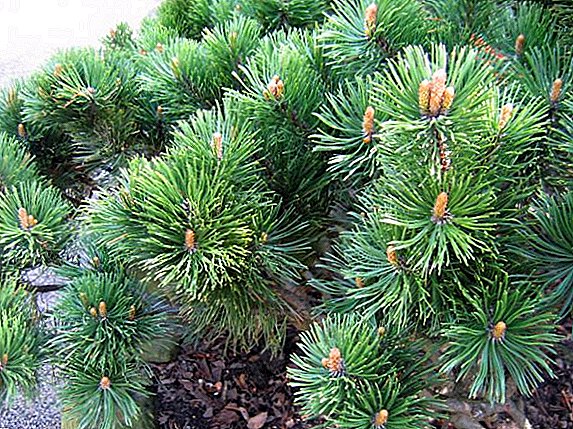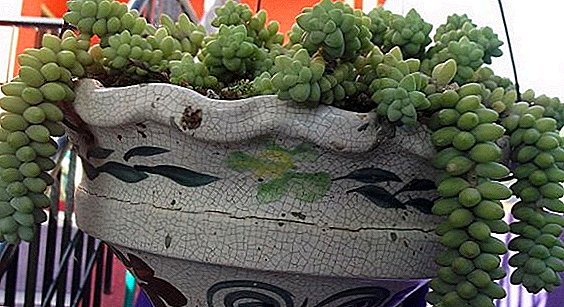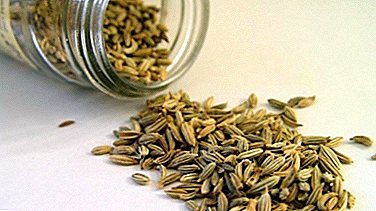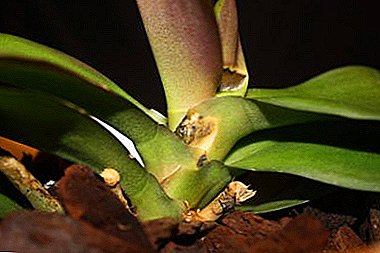
The natural habitats of orchids are tropical forests with dense dense foliage. Getting to our apartments, it is difficult for a tropical beauty to adapt and change her natural habits. Because of this, orchids are considered to be among the most capricious home flowers, the care of which is specific. They are more than other indoor plants susceptible to various diseases.
What is it?
There are 3 main types of diseases that orchid is prone to. These are fungal, bacterial and viral. Fusarium refers to fungal diseases. His treatment will be effective only in the early stages, before the onset of root damage.
Fusarium is an infection of the plant with Fusarium fungi (Fusarium). Fungi multiply through spores (conidia). The disease is included in the group of infectious and very dangerous diseases. The pathogen enters the plant through microcracks, a zone near the stem, rhizome, or through spore-infected seeds and seedlings. There are 2 types of fusarium rot: root and stem.
A photo
See further photos of orchids infected with Fusarium:





What does it look like?
The first symptoms are the appearance of white-pink specks or small balls on the root zone and on the stem. Further signs of infection are clearly visible on all parts of the plant.
- Root. At the beginning of root infection, it turns red, as the progression of fusarium occurs, dents appear on it (resembling traces of tight ligation). Over time, the reddened areas of the root darken and die.
- Leaves. Turn yellow, curled. The disease develops from the top of the plant and spreads throughout the flower.
- Stem. Acquires a dark brown color, loses its elasticity, becomes thin.
- Cut locations. Dark brown rings are clearly visible on the vessel walls.
Why can hit the plant?
Fusarium usually affects weakened orchids. Plant immunity can be reduced for a number of reasons: from improper care to inappropriate soil. The following conditions are considered favorable for the progression of the disease.
| Factor | Explanation |
| Low soil temperature in the pot |
|
| Abundant watering | Moisture stagnation, low oxygen and poor lighting are an excellent environment for the appearance of pathogenic microflora. |
| There is a lot of peat or foam in the ground | Substances make the soil acidic. In such a soil, beneficial microorganisms that prevent the mass reproduction of fungi do not settle. The share of peat and foam should not exceed 20% of all components. |
| Saline substrate | Salts can penetrate both from fertilizers and as a result of irrigation with ordinary tap water. To minimize the risk of salinization, you need to replant orchids every 2-3 years, and once every 5-7 months soak the culture in warm water. |
What is the danger?
Fusorium fungi cause blockage of the main vessels of the orchid (at the root, on the leaves and in the stem). As a result, dehydration and wilting occur. The green parts darken, dents appear on them. If the infection has affected only the aboveground part of the plant, remedial measures can be taken. If the rot has spread to the root, the orchid will die.
Treatment of fusarium rot folk remedies
 Treat infected orchid using safe folk recipes or potent poisons and chemicals. But the algorithm for preparing a flower for processing is identical for any means.
Treat infected orchid using safe folk recipes or potent poisons and chemicals. But the algorithm for preparing a flower for processing is identical for any means.
- Isolation of a sick orchid, quarantine of neighboring flowers.
- Pull the infected plant out of the pot, rinse with water at room temperature.
- All rotten parts carefully cut off. Place the slices sprinkled with crushed activated carbon.
- Orchid dry. And only now you can begin treatment with drugs.
Help recipes
| Title | Application |
| Infusion for spraying |
|
| Infusion of marigolds (Chernobrivtsev) | For 2 liters of warm water you need 3 tbsp. dry flowers. Insist 2 days, use for spraying. |
| Wood ash | 2-3 pinches pour hot water, insist up to 2 days. The resulting liquid to water the orchid. |
| Recipe combination |
|
Fusarium develops rapidly and is a great threat to orchids.. If after 2-3 days there is no positive effect from folk recipes, it is better not to delay and start processing chemicals.
What chemicals to use?
Need to take fungicides.
It is necessary to begin treatment only after the wounds or cuttings of orchids are healed. It is advisable to do this in 1-3 hours after cleaning the plant from infected areas.
You can take:
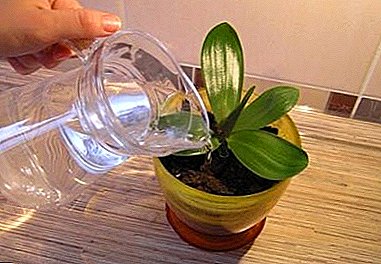 Topsin.
Topsin.- Benomil.
- Fundazim
- Previkur.
Fundazol enjoys a good reputation.:
- To prepare the working solution, mix 1 g of Fundazole powder in 1 liter of water.
- Repeat treatment 3 times, the time interval is 10 days.
- Orchid needs to be transplanted into a new pot. Before planting for the prevention of soil can be sprayed with a solution of Fundazole. Put the pot on a warm place with sufficient lighting.
- Leave the quarantined flower for 3 weeks. At this time, water only the roots, the moisture should not fall on the green mass. For irrigation, you can take a weak fungicidal solution (getting with water, heals the plant from the inside).
Common methods of treatment - soaking, the creation of greenhouse conditions - with fungal infection will not help, and even harm. High humidity will create excellent conditions for enhanced reproduction of Fusarium spores.
If the fungus affects the orchid root, the plant must be removed along with the ground. The pot can be reused, but only after soaking it in a solution of 5% copper sulfate. Fusarium fungi are very tenacious: in the treatment of 70% are destroyed, and the remaining 30% hibernate and become active under favorable conditions. The pathogen lives in the soil and on parts of the infected orchid for a long time..
Prevention
To prevent fusarium, it is enough to follow simple well-known rules.
- Normalization of soil moisture and air through airing the room and loosening the soil.
- Observance of optimum temperature condition (not less than 15 degrees).
- Prior to transplantation, treat the soil substrate with any disinfectant.
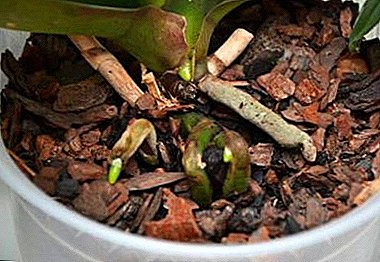 Do not abuse watering. Avoid stagnant moisture.
Do not abuse watering. Avoid stagnant moisture.- Ensuring sufficient lighting, compliance with the norms of fertilizing and fertilizer.
- It is undesirable for nitrogen to prevail in the soil, since the element weakens the orchid's immunity and makes it vulnerable to decay.
- Regularly inspect the orchid and the surface of the soil in the pot for infection.
So, fusarium is a dangerous fungal disease. The pathogen enters the orchid through microcracks in the green part, through the roots or contaminated soil. Treatment requires emergency. With the defeat of the root system, the plant dies. Effective prevention - the right care and the creation of suitable conditions of detention.


 Topsin.
Topsin. Do not abuse watering. Avoid stagnant moisture.
Do not abuse watering. Avoid stagnant moisture.

